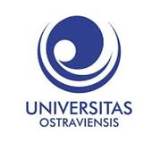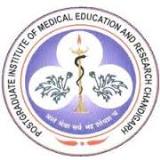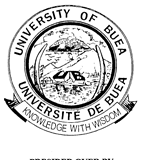Day 3 :
Keynote Forum
Hassan K Bassiouny
Alexandria University, Egypt
Keynote: Validity of polymerase chain reaction (PCR) versus coproscopic examination for diagnosing infection with Schistosoma mansoni in low intensity endemic area in Egypt
Time : 09:30-09:55

Biography:
Hassan K Bassiouny completed the Dr. PH degree at the age of 29 years from High Institute of Public Health (HIPH), Alexandria University, Egypt. He is a Professor of Medical Parasitology, Tropical Health Dept., HIPH and Former Dean of the HIPH for 3 years. He has published more than 60 papers in reputed journals and has been serving as an Editorial Board Member of reputed journals as EMHJ (WHO), Saudi Medical Journal (SMJ), Bulletin of the HIPH. In addition, he supervised more than 40 Master and Doctorate degrees in the field of Medical Parasitology and Tropical Medicine.
Abstract:
Introduction: Egypt is one of the most highly endemic countries with localized transmission foci of schistosomiasis, re-infection is continuing problem in rural areas due to lack of improvement in sanitation conditions.
Aim of work: This study assessed the validity of conventional PCR (cPCR) versus coproscopic techniques as gold-standard for diagnosing of S. mansoni infection in low intensity endemic area in Kafr El-Sheikh governorate, Egypt.
Methodology: It was a cross-sectional study. The study examined faecal samples of 120 primary schoolchildren [74 (61.7%) males and 46 (38.3%) females] with mean age 10.16±0.798 years (range: 9-12 years). Three fresh stool samples were collected on three consecutive days from each study subject and examined by FECS (3 slides from one fecal sample of the first day), Kato-Katz (10 slides from 3 fecal samples on 3 consecutive days- 6 slides on the first day and 2 slides on 2nd and 3rd days samples respectively) and cPCR (one sample of the fecal specimen of the first day).
Results: The prevalence S. mansoni infection was 40.0%, 69.2% and 80.8% by the three techniques respectively. All infected cases were of low intensity of infection. The Kappa index and diagnostic parameters showed a good diagnostic value of cPCR as compared to coproscopic examination.
Conclusion: cPCR demonstrated a good diagnostic performance for the detection of S. mansoni in low intensity endemic area versus coproscopic examination as gold-standard.
- Symposium on: The Challenge of Parasites and immunosuppression, from diagnosis to treatment
Session Introduction
Luiz Euribel Prestes Carneiro
Oeste Paulista University, Brazil
Title: Parasites and primary immunodeficiencies
Biography:
Abstract:
Vyacheslav Yurchenko
University of Ostrava, Czech Republic
Title: How monoxenous trypanosomatids can explore new ecological niches in immunocompromised individuals: A case of Novymonas gen.
Biography:
Abstract:
Sheikh Tanveer Salam
Amar Singh College, India
Title: Coccidiosis in poultry: Pathogenesis, Immune response and Challenges
Biography:
Abstract:
- Tack 10: Advances in Antimicrobials, Vaccines & Therapeutics
Track 13: Plant-microve Symbiosis & Parasitic Diseases
Track 14: Molecular Genetics and Genomic Analysis
Track 15: Diagnosis
Track 16: Novel Approaches in Disease Control

Chair
Jiannong Xu
New Mexico State University, USA

Co-Chair
Vyacheslav Yurchenko
University of Ostrava, Czech Republic
Session Introduction
Jiannong Xu
New Mexico State University, USA
Title: The metagenomic landscapes of the misquito gut ecosystem: Taxonomic, functional and metabolic configuration
Time : 10:40-11:00

Biography:
Jiannong Xu, PhD, is an Associate Professor, Biology Department, New Mexico State University. He obtained his PhD in Medical Entomology at Second Military Medical University in Shanghai, China. He has been working on the Metagenomic interactions of the mosquito gut ecosystem and the impact of microbe-mosquito relationship on mosquito life traits, such as fecundity and immunity.
Abstract:
The mosquito gut accommodates a dynamic microbial community, which profoundly affects various life traits of the host mosquitoes. To characterize the metagenomic composition and functionality in the mosquito gut ecosystem, we conducted metagenomic DNAseq and RNAseq from mosquito gut samples and generated ~17 GB data. The non-mosquito reads were de novo assembled into contigs. The taxonomic assignment identified >300 taxa, in which dominant taxa belong to family Enterobacteriaceae, Acetobacteriaceae, Pseudomonadaceae and Flavobacteriaceae. Gene prediction recognized ~29,400 protein coding sequences, 36% of which were assigned into 738 subsystems. Metabolic reconstruction predicted 102 pathways, which include 1639 biochemical reactions involving 1252 compounds. The metagenomic database was used as a reference for DNAseq and RNAseq mapping. The diet regime has significant impact on the structure of the gut microbial community. The microbial community in the sugarfed guts showed higher diversity, which was reduced in the blood-fed gut with dominance of enteric bacteria. The blood digestion is accompanied with increased oxidative stress in the gut due to the release of preoxidantheme from digested hemoglobulins. The gut bacteria may contribute to the redox capacity to maintain the redox homeostasis in the gut. The comparison of metabolites from sugarfed and blood-fed guts revealed that heme metabolism and antioxidant related metabolism were active. The RNAseq data corroborated the metabolic findings. In summary, the taxonomic, genetic and metabolic characterization provides metagenomic landscapes of the mosquito gut ecosystem, which would help to further explore the functionality of the microbiome and its symbiotic relationship with the mosquito host.
Vyacheslav Yurchenko
University of Ostrava, Czech Republic
Title: Leptomonas seymouri in Leishmania infections-genetic mechanisms of pre-adaptation to the vertebrate host\'s environment.
Time : 11:15-11:35

Biography:
Dr. Vyacheslav Yurchenko is currently an Assistant Professor and the head of the laboratory of Molecular Protozoology at the Life Science Research Centre, University of Ostrava, Czech Republic. He received his Ph.D. degree in Molecular Biology from the Moscow State University (1999) and conducted postdoctoral research at the Albert Einstein College of Medicine and Rockefeller University in NY. His laboratory is involved in research of monoxenous Trypanosomatidae and mechanisms governing virulence of Leishmania.
Abstract:
The co-infection cases involving dixenous Leishmania spp. (mostly of the L. donovani complex) and presumably monoxenous trypanosomatids in mammalian hosts including humans are well documented. The main opportunistic parasite has been identified as Leptomonas seymouri of the sub-family Leishmaniinae. The molecular mechanisms allowing a typical parasite of insects to withstand elevated temperature and substantially different conditions of vertebrate's tissue are not understood. Here we demonstrate that L. seymouri is well pre-adapted for the environment of the warm-blooded host. We sequenced the genome and compared the whole transcriptome profiles of this species cultivated at low (mimicking insect) and high (mimicking vertebrate host) temperatures and identified genes and pathways differentially expressed under these experimental conditions (for example, genes involved in oxidative stress response, etc). Importantly, L. seymouri can survive in sand fly insect vectors capable of transmitting Leishmania parasites, Phlebotomus argentipes and P. orientalis, although the intensity of infection compared to Leishmania is significantly lower. We concluded that although Leptomonas seymouri has a capacity to co-infect vertebrates along with Leishmania spp., additional factors are required for establishing a stable infection of this monoxenous trypanosomatid.
Doaa Moustafa Sultan
Mansoura University, Egypt
Title: Evaluation of three DNA extraction techniques in molecular diagnosis of toxoplasmosis
Time : 11:35-11:55

Biography:
Dr. Doaa Sultan completed her education in Mansoura faculty of medicine - Mansoura University- Egypt. She was graduated in 1991 with MBBCh and she completed her master’s degree in parasitology in 1997 and her PhD in 2004. She is working as an associate professor in medical parasitology- Mansoura Faculty of Medicine - Mansoura University- Egypt. She has published more than 25 papers in conferences and reputed journals.
Abstract:
Conventional laboratory diagnosis of toxoplasmosis is based on the presence of IgM and IgG anti-Toxoplasma gondii antibodies; however molecular techniques have emerged as alternative tools due to their increased sensitivity. This study aimed to: 1) compare the performance of three DNA extraction techniques and 2) assess the sensitivity of my Taq blood PCR kit for the molecular diagnosis of toxoplasmosis. Ninety male municipality workers from Dubai-UAE were included in the study with mean age (SD±) 34.544 ± 6.342. Subjects were classified according to nationality and age groups. ELISA test kits for detection of Anti- Toxoplasma IgM were used to screen the samples and results were confirmed by western blot. PCR was done for all positive samples using extracted DNA by dried blood spot DNA isolation kit, genomic DNA isolation kit and FTA elute cards. Another PCR was run on positive samples using my Taq blood PCR kit , in which whole blood was used direct without DNA extraction. A total of 11/90 (12.2%) were found to be positive for anti-Toxoplasma IgM using ELISA test, 7/11 were confirmed by western blot. The highest percentage of infection was noticed in age group (23-35years) and in Asian nationality. The sensitivity of the three DNA extraction techniques was as follow, 100% for both dried blood spot and genomic DNA isolation kits, and 71.43% for FTA elute cards. However the sensitivity of my Taq blood PCR kit was 28.57%.
Rahma Abu Bakr Musa Adam
Bahri University College of Applied and Industrial Science, Sudan
Title: Assessment of Sterculia setigera and Lantana camara Extracts as Schistosomicidal agent
Time : 11:55-12:15

Biography:
Rahma Abu Bakr Musa has completed her PhD from Khartoum University, she has published three papers, she is the head of the department of microbiology, biotechnology and parasitology.
Abstract:
This study was planned to evaluate the prophylactic and curative activities of the methanol extract of two medicinal plants; Sterculia setigera bark and Lantana camara leaves and their combination against Schistosoma mansoni in white albino mice and to evaluate their effects on the major enzyme activities involved in liver metabolism during the course of infection. Liver function tests, total proteins, albumins, globulins, alanine aminotransferase (ALT) and aspratate aminotransferase (AST) were measured. A group of 35 adult normal CD-1 Swiss albino mice, each weighing 20 gms, were divided into five groups and infected each with 80 S.mamsoni cercariae (Egyptian strain). Groups, one, two and three of the infected mice were treated orally with the extract in a dose rate of 500 mg /kg b.wt for five consecutive days; seven days before infection with S.mamsoni cercariae (Prophylactic), as well as four and seven weeks post- infection (curative). Group four was treated with praziquantel (PZQ) at a dose of 500 mg/kg b.wt for two consecutive days seven weeks post -infection (treated control), while in group five the mice were left untreated after infection (infected untreated control). Nine weeks post infection (constant period), the animals were sacrified, perfused to evaluate the efficacy of the plant extracts in the treatment of the infection.S. setigera bark, L. camara leaves and a combined dose of both extracts had a significant reduction in worm burden (29%,29%40% respectively) in vivo , and ova count and a decrease in the percentage of mature and immature stages, compare with praziquantel which has significant effect on biological parameters. The S.setigera bark extract had promising prophylactic activity (40% worm reduction) in vivo.Administration of S.setigera bark or L.camara leaves or combination extracts significantly diminished serum ALT and AST and restored albumin, globulins and total protein to the normal levels in both treated and prophylactic groups and improved A/G ratio. In conclusion the different extracts possess anti schistosomal, prophylactic a hepatoprotective activities.
Aliehsan Heidari
Alborz University of Medical Sciences, Iran
Title: Comparison of light microscopy and nested PCR assay in detecting malaria mixed species infections in an endemic area of Iran
Time : 12:15-12:35

Biography:
Aliehsan Heidari is Associate Professor and head of the department of Medical Parasitology in the faculty Medicine, Alborz University of Medical Sciences, Karaj, Iran. He received Ph.D. degree of Medical Parasitology at the School of Health, Tehran University of Medical Sciences, Iran in in 2005. He spent 6 months complementary research at the Institute of Tropical Medicine in Berlin, Germany and defended his thesis"Genetic Diversity in the Merozoite Surface Protein (MSP)-1, MSP-2 and Circumsporozoite protein Genes of Plasmodium falciparum in Sistan and Baluchistan of Iran".
Abstract:
Introduction: Despite substantial decrease of malaria prevalence in Iran in recent years, Plasmodium vivax and Plasmodium falciparum species still cause symptomatic malaria infection in southeast of the country. The aim of this study was to detect mixed species malaria infections by microscopy and nested PCR in an endemic area of Iran.
Materials and Methods: The microscopic examination of thick and thin blood films was applied to P. vivax infection. The nested PCR was carried out using the Plasmodium 18 sub-unit ribosomal ribonucleic (Ssr RNA) genes to detect the mixed species infections and to identify the malaria parasites in the blood samples. A total of 160 subjects with symptomatic malaria infections participated in the study. The blood smears were stained with 3% Giemsa and examined microscopically by two blind independent experts in microscopy.
Results: Parasitemia ranged from 120 to 10000 parasites per µl of blood with mean 9500 p/µl. In total, 1.88% and 11.25% of patients indicated mixed species infections in microscopy and nested PCR, respectively. The sensitivity of light microscopy for detection of mixed species malaria infections was 16.6% (95% CI 3-49.1). There was a significant difference between sensitivity of microscopy and nested PCR in identifying mixed species malaria infections (P=0.0009).
Conclusion: Our findings show that nested PCR assay can facilitate the better diagnosis of mixed species infections and the correct treatment of malaria patients especially in regions where prevalence of Plasmodium falciparum resistant to chloroquine is high. It is also concluded that mixed species infection is almost common in the region where both species coexist and their detection is only based on traditional microscopy that may underestimate their importance.
- Young Research Forum
Session Introduction
Hannah Elsevier
Stony Brook University, USA
Title: Impact of Public Health Intervention on Rate of Soil Transmitted Helminthias (STH) Among IndigenousVillage Children in the Santa Maria Tepexipana Region of the State of Oaxaca, Mexico
Time : 13:20-13:35

Biography:
Hannah Elsevier is a third-year MD/MPH student at Stony Brook University. She has previously conducted epidemiologic studies of STH in Panama and has presented these findings at scientific conferences.
Abstract:
STH are the most prevalent Neglected Tropical Disease (NTD) in Mexico. We sought to assess the impact of an 18-month public health intervention (treatment, construction of hygenic facilities, and education) on the rate of STH among indigenous children in Mexico.The study population included 8 villages (n=2,800) in the southern Oaxaca region of Mexico. At initial treatment, single dose albendazole, (200-400mg) was administered to all villagers who consented, excluding pregnant and nursing women. A 10% random sample of children aged 2-12 years were tested for STH using a modified Kato Katz method. After 18 months of intervention, including another albendazole treatment at 9 months, a sample of children were similarly tested. STH rates were estimated for 4 Village clusters (based on proximity) at initiation and follow up. Estimated total number of infected children was reduced from 960 to 603 (37% reduction overall*). No side effects were observed from treatment. Pre-intervention, the Santa Maria Tepexipana and La Cienega clusters had STH infection rates of 68% (n=40) and 53% (n=47) respectively, dropping to 31% (n=39) and 26% (n=23) post-intervention, demonstrating statistically significant (p<.01) decreases of 54% and 51% respectively. Miramar and Candelaria had lower initial infection rates at 44% (n=41) and 24% (n=21) and showed no statistically significant post-intervention decrease (6% and 10%).This multifaceted intervention was effective in reducing the burden of STH, particularly in the high risk regions. Further intervention, including treatment, additional hygenic facilities, and education is warranted (and underway) to achieve goal of a <10% STH rate.
Suresh M Ganesan
Massachusetts Institute of Technology, USA
Title: A novel, robust aptamer based gene regulatory system for functional genomics of malaria parasites
Time : 13:35-13:50

Biography:
Suresh M Ganesan has completed his PhD at the age of 32 years from Drexel University and currently doing Postdoctoral studies from Massachusetts Institute of Technology. He has published few important manuscripts on malaria in reputed journals and has been serving as peer reviewer for parasitology journals.
Abstract:
Malaria is a major cause of human morbidity and mortality, especially in tropical and subtropical countries. The most severe form of malaria is caused by the parasite, Plasmodium falciparum. A limited set of antimalarial drugs is used to treat the disease, but drug resistance is an increasing problem. Hence, identification of novel anti-malarial drugs is a high priority. While our understanding of Plasmodium biology has increased in the post-genomic era, tools for doing functional genetics remain quite limited. To address this need, we previously developed an RNA-Protein interaction system that facilitates robust and inducible regulation of target gene translation in eukaryotic organisms including Plasmodium. Here, we present the application of protein engineering approaches to integrate our synthetic control system with native Plasmodium translational regulatory mechanisms. In so doing, we achieved substantially increased regulatory dynamic ranges (up to 200-fold) compared to a 5-10 fold range of the original system. As a proof-of-concept, we have generated P-type cation-ATPase (PfATP4) conditional knock down P. falciparum strain. PfATP4 is considered to be a potential target of several antimalarial compounds. However, the importance of this protein has not been studied so far. Here, our system provides first, direct evidence for the essentiality of this gene in asexual stages of the parasite. We are currently using this tool to study multiple Plasmodium genes. In summary, we have developed a novel, robust and reliable gene regulatory tool for regulating gene expression over a wide dynamic range which will facilitate greater understanding of the biology of these parasites.
Aygul Ishemgulova
University of Ostrava,Czech Republic
Title: Common virulence factors in Leishmania infection
Time : 13:50-14:05

Biography:
Aygul Ishemgulova is a PhD student at the Life Science Research Centre, University of Ostrava, Czech Republic. She graduated from Department of plant physiology and biochemistry of Faculty of Biology and Soil Sciences of Kazan State University, Russia in 2011. Her current work is focused on analysis of Leishmania pathogenicity.
Abstract:
Leishmania parasites cause a broad spectrum of clinical manifestations. This study is focused on virulence factors in Leishmania that are shared between two different Leishmania species. Common virulence factors are important for design of universal drug against leishmaniases. In this work we compared the expression profiles of the virulent and attenuated strains of L. major and different developmental stages of L. mexicana using next-generation sequencing. Avirulent line LV561/AV with attenuated infectivity for mice and sand fly vectors was obtained by long-term cultivation of the L. major virulent strain LV561 (LRC-L137; MHOM/IL/1967/Jericho-II). Whole transcriptome analysis revealed that 230 transcripts are upregulated in LV561/V (virulent) strain. Procyclic promastigote, metacyclic promastigote and amastigote stages were obtained by differentiation of L. mexicana in axenic culture. RNA-seq analysis revealed that 8 genes are up-regulated in infective for human metacyclic promastigotes; 276 genes are up-regulated in a blood-dwelling amastigotes. Among common virulence factors in Leishmania, e.g. genes that are up-regulated both in virulent strain of L. major and metacyclic promastigotes or amastigotes of L. mexicana, we found genes encoding for major surface protease gp63, casein kinase I, pteridine transporters and several hypothetical proteins.
Kirti Megha
PGIMER, India
Title: Prevalence and genotyping of Acanthamoeba spp. in keratitis patients from a tertiary care centre of North India
Time : 14:05-14:20

Biography:
Kirti Megha has completed her MSc (Hons.) in Zoology from Panjab University, Chandigarh and is currently pursuing her PhD from Department of Medical Parasitolgy, Postgraduate Institute of Medical Education and Research, Chandigarh, India. She has 2 publications in reputed journals.
Abstract:
Acanthamoeba Keratitis (AK) is a painful vision threatening infection caused by a free living pathogenic amoeba Acanthamoeba. It is often not suspected and very difficult to treat. Timely diagnosis is required for better visual outcome. A total of 240 patients with suspected infectious keratitis presenting to the Advanced Eye Centre at Postgraduate Institute of Medical Education and Research, a tertiary care centre of North India were included. Their corneal scrapings, tears and lens solutions & lens case (in case of lens wearer) were collected for microscopic examination, culture and molecular diagnosis. A total of 5 patients (2.08%) were diagnosed with AK by NNA culture and PCR. Acanthamoeba were detected in corneal scraping in 3 patients who had history of trauma with vegetative matter, wooden stick and dust particles, whereas lens solution in 1 patient and bandage contact lens in 1 patient who underwent surgery for keratoconus. Four of the patients recovered after appropriate treatment and one underwent keratoplasty. Genus specific ASA.S1 amplicon of diagnostic fragment of 18S rDNA gene was used for genotyping. Among 5 isolates, 2 belonged to T4, 2 belonged to T11 and 1 belonged to T5. Trauma and careless practice in contact lens handling, including the use of tap water for storing lenses, poses as a major risk factor associated with AK.
Li Xin-yu
Beijing Forestry University, China
Title: Ultrastructural investigation of antennae in bot flies (Diptera: Oestridae)
Time : 14:20-14:35

Biography:
Li Xin-yu has accomplished her bachelor at the age of 23 and continue her postgraduate studies in Beijing Forestry University, focusing on the morphology of Oestridae (Diptera), a group of obligate parasites with great economic importance. She has begun her investigation since she was a junior and published some papers in reputed parasitology journals. With her ever deeper research, the work will contribute to the development of synthetic attractants for the monitoring studies, and ultimately in the control of these parasitic flies.
Abstract:
The bot flies are economically important obligate parasites that can cause severe myiasis in mammals. As essential olfactory organs, the antennae of these host-specific oestrids, Gasterophilus spp. [G. nasalis (Linnaeus), G. pecorum (Fabricius), G. intestinalis (Geer), G. haemorrhoidalis (Linnaeus) and G. nigricornis (Loew)], Rhinoestrus purpureus (Brauer) and Hypoderma lineatum (Villers), are scrutinized using stereoscopic microscope and scanning electron microscope. General morphology of antennae is provided in detail, combined with distribution, types, size and ultrastructures of antennal sensilla. On antennal funiculus, five types of sensilla are observed, including trichoid, basiconic, coeloconic, clavate and auriculate sensilla. Three common characters are shared among these species: 1) the prolonged or enlarged antennal pedicel tend to envelop the antennal funiculus; 2) the much higher diversity in the morphology of antennal sensilla; 3) the numerous sensory pits and pit sensilla on antennal funiculus. An unusual phenomenon in Gasterophilus species is the presence of sensilla on antennal arista. Disparity and diversity of the antennal and sensory structures are analyzed from the phylogenetic and functional perspective.
Ajakaye O G
Rufus Giwa Polytechnic, Nigeria
Title: Environmental factors and the risk of urinary schistosomiasis in Ile Oluji/Oke Igbo local government area of Ondo state
Time : 14:35-14:50

Biography:
Ajakaye O G has completed Master of Science from University of Port Harcourt, Rivers state, Nigeria and is currently undertaking a PhD program at the Federal University of Technology, Akure, Ondo state. She is a Lecturer at the Department of Crop, Soil and Pest Management Technology, Rufus Giwa Polytechnic, Owo.
Abstract:
Geographic information systems are being increasingly used to show the distributions of disease, where data for specific environmental risk factors are available. For successful transmission of schistosomiasis, suitable climatic conditions and biological events must coincide; hence its distribution and prevalence are greatly influenced by environmental factors affecting the population of snail intermediate hosts and human hosts. Prevalence and demographic data was obtained by parasitological analysis of urine samples and questionnaire administration. The mean values of environmental factors corresponding to the local government area were obtained from remotely sensed images and data from climate research unit. The effects of the environmental factors were determined by using spatial regression analysis to analyse the correlation of environmental factors to prevalence of schistosomiasis. There was a negative correlation between infection and elevation. There was a positive correlation between vegetation, rainfall, slope, temperature and prevalence. There was also a positive correlation between proximity to water body and prevalence. The result shows the study area to be at low to high risk of infection.
Oscar RodrÃguez-Lima
Universidad Nacional Autónoma de México, Mexico
Title: Analysis of TATA binding protein (TBP) of Taenia solium and core promoter elements in Taenidae family genes
Time : 14:50-15:05

Biography:
Abstract:
Analysis of TATA binding protein (TBP) of Taenia solium and core promoter elements in Taenidae family genes: Little is known about the transcriptional system in cestodes, therefore we want study and found the differences with the human and pig (host) transcription system. The aim of this study was the identification of the elements present in the core promoter that regulates the formation of the pre initiation complex (PIC) in Taenidae family genes and the analysis of TATA Binding Protein of Taenia solium (TsTBP). We analyze the core promoter of different genes and identify the cis-elements presents. We have cloned and characterized a TBP in T. solium. We produce an in silico model from TsTBP, produce nuclear extracts from cysts and identified TsTBP by western blot. Sothern and northern blot were carried out. We perform EMSA and Super Shift to TATA Box present in proximal promoters of T. solium genes. We identified putative core promoter elements present in Taenidae family. We isolate the gene and cDNA that encodes TsTBP. The amino acid sequence reveals a 238-residues protein with an expected weight of 26.7 kDa. Southern and northern blot suggest the presence of one gene and two mRNA for TsTBP. EMSA and super shift shows a specific interaction between the TATA box of different promoters and nuclear extracts from T. solium. Our results indicate that we have isolated the gen encode a TBP and showed its interaction with the TATA box from different genes. We identified INR and putative DPE in some genes from Taenidae family.
Arrey Eyong Emmanuel
University of Buea, Cameroon
Title: Prevalence of Staphylococcus aureus associated with multi-drug resistance in some hospitals in Limbe Health District in the South West Region of Cameroon
Time : 15:05-15:20

Biography:
Arrey Eyong Emmanuel holds the Cameroon G.C.E Ordinary and Advanced level certificates in sciences and later enrolled in the faculty of Health sciences at the University of Buea, Cameroon in 2009. Currently he is 5th year medical student in Medical Unit, Faculty of Health Science in the University of Buea, Cameroon.
Abstract:
Nosocomial and community-acquired Staphylococcus aureus infections are significant burdens to our health care systems. These infections are associated with significant morbidity and mortality, increased length of hospitalization and increase treatment costs. A study on Staphylococcus aureus was carried out with a view to isolating, determining the prevalence and antibiotic sensitivity pattern of the isolates present in clinical and environmental samples in Limbe Health District. The results obtained indicated that 231 samples examined (104 environmental, 102 from patients and 25 from health workers), 85(36.8%) were positive for Staphylococcus aureus. Fifty three (41.7%) and thirty-two (30.8%) represented positive cases from clinical and environmental samples respectively. Of the clinical samples examined, gentile secretions (68.2%) had the highest isolation rate while furniture had the highest isolation rate (40.6%) of S. aureus in environmental samples. Females were more predisposed to infection as well as individuals of the age group 31-40years. Results of antibiotic sensitivity tests carried out showed that vancomycin was most effective (100% susceptible) closely followed by ofloxacin (71.8% susceptible). Isolates exhibited complete resistance (100%) to ampcillin, bacitacin and penicillin. Marked resistance was also observed in methicitin (94.1% resistance), gentamicin (83.5% resistance) and oxacillin (75.3% resistance). Twenty-one antibiotyes were identified. A composite biochemical-antimicrobial profile revealed five biotypes (I, II, III, IV and V) with biotype I being the most frequently encountered, biotype II had the highest occurrence of seven antibiotypes while biotypes IV and V had the least number of antiobiotypes (two each). The multiple resistances observed are not surprising as multi-drug resistant strains are steady increasing over the years. As such, hospital infection control strategies will have to be redefined and community approaches developed to reduce transmission.
Ezeh I O
University of Nigeria, Nigeria
Title: Effect of repeat dosing of Dinazene® on the serum biochemistry of experimental Trypanosoma brucei infection in albino rats
Time : 15:05-15:20
Biography:
Ezeh I O is a Doctoral student of the Department of Veterinary Parasitology and Entomology, University of Nigeria, Nsukka. He has been a Graduate of Veterinary Medicine and staff of the Department for over ten years. He has published over 20 peer reviewed journal articles in reputed journals and teaches veterinary parasitology to undergraduate students. He is interested in the chemotherapy and immunology of trypanosomosis.
Abstract:
The effect of repeated doses of Dinazene® on the serum biochemistry of experimental Trypanosoma brucei infection in albino rats was studied. Thirty adult female albino rats (130g–190g) were used and assigned into 6 groups (A–F) of 5 rats, fed proprietary feed and water ad libitum. Groups A–D were inoculated intraperitoneally with 106 trypanosomes while groups E and F served as uninfected controls. Groups A and E were treated once at day, 11 post inoculation (PI) with 7.0 mg/kg of Dinazene®; group B was treated twice at days 11 and 18 PI; group C was treated three times at days 11, 18 and 25 PI; while group D was treated four times at days 11, 18, 25 and 32 PI. The serum activities of ALT, AST and ALP; and the serum levels of urea, creatinine and bilirubin were assayed fortnightly. Parasitaemia was also determined. The results showed an average pre-patent period of 7 days PI. All treated rats were aparasitaemic by day 16 PI. Relapse infection was recorded in group A, 35 days PI and in groups B and C on 49 days PI. Significant increases (P < 0.05) in the activities of ALP, AST and ALP following relapse (week 11) occurred in groups B and C. Similarly the serum levels of bilirubin, creatinine and urea increased significantly (P < 0.05) among the relapsed groups. It is concluded that although Dinazene® was able to prevent relapse after four repeated treatments there was no observed toxicity.
- Award Ceremony
Closing Ceremony









